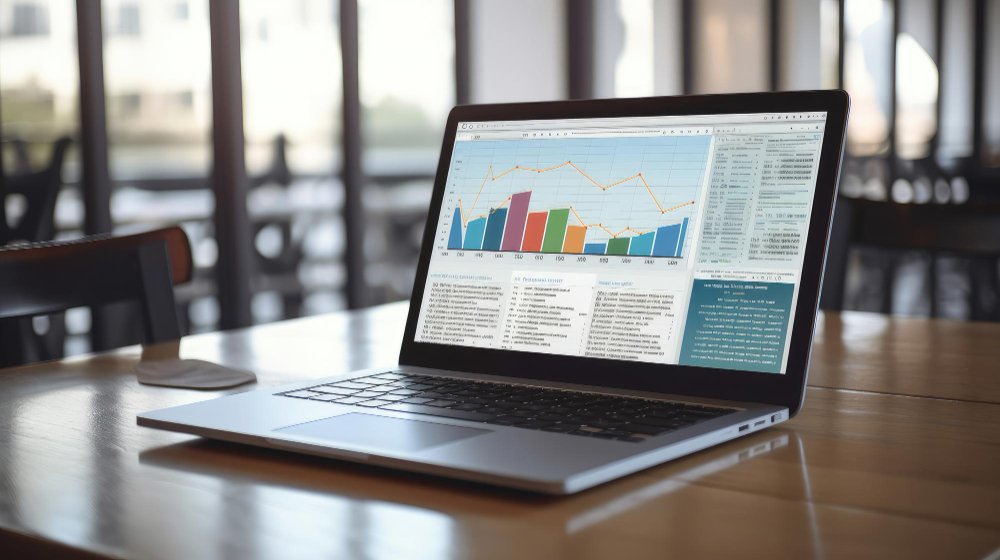Introduction: Google Analytics Data Collection Limitations
Zennemis – Google Analytics Data Collection Limitations. Did you know 66% of websites use analytics tools, with over 86% using Google Analytics? This shows how important it is for business decisions. But, it’s key to know Google Analytics’ limits. The switch to Google Analytics 4 (GA4) has shown some big issues with data collection.
Understanding these limits is crucial for making the most of your analytics. This knowledge helps improve your marketing and reach your business goals.
Understanding Google Analytics Overview
Google Analytics is a top web analytics solution for businesses. It gives insights into website traffic and user actions. It has features to measure important metrics for marketing and content improvement.
The switch to Google Analytics 4 (GA4) brings a new way of measuring. It’s event-driven, unlike Universal Analytics (UA). This change gives better data, but it might be harder for new users to learn.
The Google Analytics overview shows why it’s key to know its main parts before its limits. GA4 tracks user segments like age, gender, and device. This helps find out who is most interested in your content.
GA4 also tracks events like file downloads and video views. But, it has limits on certain platforms.
Knowing how to use Google Analytics well helps measure website success. It lets you check how marketing works and make content better. The Realtime Report gives quick insights into user activity. This helps make better decisions fast.
Getting good at Google Analytics helps improve your digital strategy. It’s a big step towards better online success.
Key Limitations in Data Collection
Google Analytics is a great tool for understanding website performance. But, it’s important to know its key limitations in data collection. These key limitations Google Analytics can affect how well you analyze your data.
One big issue is that Google Analytics can’t collect data from all systems and sources. For example, it can’t track offline conversions by default. This means it misses both online and offline customer actions. Also, users with ad blockers or privacy browsers like Brave might block important scripts, leading to missing data.
Privacy features like Safari’s Intelligent Tracking Prevention (ITP) make things even harder. They block tracking scripts, affecting data collection.
Another data collection limitation is that Google Analytics doesn’t let you access raw data. This means you can’t do detailed analyses. Instead, you get insights from processed data, which might hide important details.
Data sampling is another Google Analytics shortcoming. It can make report results less accurate. When sampling is on, reports might not show the real performance. Knowing these limits helps you use Google Analytics better.
google analytics cannot collect data from which systems by default
Knowing what Google Analytics can’t do is key for businesses wanting to get the most out of their data. It can’t collect data from many systems by default. This includes platforms that don’t work well with Google Analytics.
You might find that some apps or tools don’t work well with this service. This can make tracking harder.
Systems not compatible with Google Analytics
Many systems don’t work with Google Analytics. This includes some e-commerce sites and CRM software. These issues can make it hard to understand customer behavior and what they buy.
Data sources not supported by Google Analytics
Google Analytics can’t handle all data sources, especially offline ones. This means some data is missing. Businesses might not get the full picture of their performance.
It’s important to find ways to get all the data you need. This helps in making better decisions based on complete information.
Incompatible Systems for Google Analytics Data Collection
Many systems don’t work well with Google Analytics. This makes it hard to get all the data you need. For example, old web apps or special CMS systems might not work right with Google Analytics.
This leads to big problems because important data isn’t tracked. It’s like trying to take a picture but the camera won’t work.
Some companies also struggle with marketing tools and online stores. These tools use different data formats or tracking codes. This makes it tough to collect data.
Not fixing these issues means you miss out on important insights. You might not understand how users behave or how your website performs. It’s like trying to read a book with missing pages.
Limitations of Google Analytics Data Sampling
Google Analytics data sampling has its limits. When it’s turned on, it only looks at a part of your data. This can lead to wrong or missing information about your website visitors. It’s used when there’s too much data to handle, making it hard to make smart business choices.
Impact on Data Accuracy
Data accuracy can suffer a lot. Big datasets, like those with over 500,000 sessions, often get sampled. This means you might miss important details about how users interact with your site. Relying on sampled data can lead to wrong conclusions, affecting your plans and decisions.
When Sampling is Activated
Sampling kicks in for a few reasons in Google Analytics. It happens with complex reports or lots of visitors. This makes the data less detailed and hides important trends. To get around this, you could simplify your reports or use Google Analytics 360. But, this costs more, which might be a problem for some businesses.
No Access to Raw Data
Google Analytics has its limits, especially when it comes to raw data access. Users can only see data in groups, not individual pieces. This makes it hard to do detailed analyses.
Not having raw data makes it tough to get precise insights into how users interact with your site. This is a big problem for anyone trying to understand their audience better.
Consequences for Data Analysis
Not having detailed data affects how you can analyze it. Tasks like tracking user groups, understanding behavior, and segmenting data become very hard. These are key for making smart decisions in digital marketing.
Without these tools, businesses might miss out on chances to improve. This shows how important it is to have access to raw data. It’s a big issue for anyone using Google Analytics.
Google Analytics Default Data Collection Restrictions
Google Analytics has some limits in its data collection. These Google Analytics default data collection restrictions help follow privacy rules. They also make sure you get useful insights.
For example, Google Analytics has data collection limits on things like user properties and event names. You can only track up to 500 different events per app user each day. These Google Analytics constraints might make you change how you track things. This could lead to missing some data in your analytics.
Knowing about these limits is key to good analytics planning. If you don’t plan well, you might miss out on important data. It’s important to check your tracking often. This helps you use your marketing strategies better and understand how users interact with your site.
Privacy Compliance Issues with Google Analytics
More businesses are using Google Analytics for insights. But, they face privacy issues. It’s key to stay compliant to keep trust and follow laws.
GDPR Compliance Challenges
The General Data Protection Regulation (GDPR) is strict on data privacy. It’s been in effect since May 2018. It demands clear consent before collecting personal info.
Google Analytics isn’t GDPR compliant by default. This could lead to big fines. Fines can be up to 4% of a company’s yearly income or 20 million euros. To comply, you need to manage user consent well.
User Data Protection Concerns
User data protection is crucial for companies using Google Analytics. They must follow laws like IP anonymization and data retention. Tools like MonsterInsights help with GDPR compliance.
MonsterInsights automates consent and stops personal data tracking. As laws change, companies must update their data handling to stay safe and compliant.
Report Processing Latency
Report processing latency in Google Analytics is the time it takes for data to be ready for analysis. This delay can make it hard to make quick decisions, especially in fast-paced marketing. You might wait 24 to 48 hours for data. During busy times, accounts with more data might wait even longer.
This delay can really affect your reporting. Businesses that need data right away might miss important insights or opportunities. To deal with this, knowing your reporting times and setting realistic expectations is key. This helps you plan better and stay on track with your marketing goals.
Conclusion: Google Analytics Data Collection Limitations
Google Analytics gives a detailed look at data, but it has its limits. It can’t collect personally identifiable information (PII). Also, there are rules about data sampling and reporting. Knowing these limits is key to making smart data choices.
As Google Analytics evolves, especially with GA4, being aware of these limits is crucial. This knowledge helps you build better analytics systems. It also keeps your data safe and accurate, avoiding common problems.
Looking into other analytics tools might also help. They could offer features that fit your specific needs better. This way, you can make the most of your digital analytics efforts.
FAQ: Google Analytics Data Collection Limitations
Which systems cannot Google Analytics collect data from by default?
Google Analytics can’t collect data from systems that don’t work with it. This includes some e-commerce platforms, old web apps, and certain CRM systems.
What are some examples of data sources not supported by Google Analytics?
Google Analytics doesn’t work with offline data or internal systems not made for web tracking. It also doesn’t support platforms that need a lot of custom work to connect.
How does data sampling affect my reports in Google Analytics?
Data sampling can make reports less accurate, especially with big datasets. It only looks at a part of the data, which might not show real user behavior or traffic.
Why is there no access to raw data in Google Analytics?
Users can’t see raw data. This makes it hard to do deep analysis and get detailed insights into how users interact with websites.
What are the default data collection restrictions in Google Analytics?
Google Analytics has limits, like only tracking 500 distinct events per app user per day. This forces businesses to change how they track data.
What privacy compliance issues should I be aware of with Google Analytics?
Companies need to think about GDPR rules, especially about data transfers and protecting user privacy when using Google Analytics.
What impact does report processing latency have on my analytics?
Report processing latency means data might not be ready when you need it. This is a big problem for sites with lots of traffic, where updates are less common.




